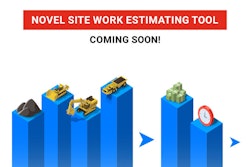Spreadsheets are great tools. Spreadsheet programs have been around for over 25 years and many contractors have built some pretty respectable spreadsheets over the years for their estimating. Spreadsheets essentially allow you to setup your own formulas for adding, subtracting, multiplying and dividing so all calculations and extensions involved in estimating can be done quickly.
You can also build different spreadsheets for different types of work so you don't forget costs in your estimate. There are many advantages of spreadsheets that detain many contractors from investing in database driven estimating programs.
Database Driven Estimating Systems
Database driven estimating systems have the same features as spreadsheets but are able to incorporate and integrate multiple processes and procedures into a single entry solution. Many contractors are deserting spreadsheets and moving toward database driven estimating systems because they can incorporate more of their internal processes and procedures like lead tracking, proposal writing, project management, scheduling, and job cost accounting into their estimating system. This way they can streamline their business and bring more profit to the bottom line.
For example, Contractors Software Group's (CSG) Plus Series product line integrates (or transfers) its SalesBuilder Plus information, a lead tracking system, with its Takeoff Plus (an estimating system) so users don't have to re-enter the same information more than once.
Aside from offering a full blow estimating system, CSG has also incorporated the ability to add specifications to an item, assembly or bid sheet template. So while estimating, you're actually creating the customer proposal/specification at the same time. These detailed or summary proposals sort the work to be performed by category of work and or by location.
Most contractors are using two programs to accomplish the same task that CSG accomplishes with one program. The flexibility in CSG's estimating system allows builders and contractors to present proposals in a variety of ways to meet the customer's needs.
Many builders and contractors are expanding their estimating system to incorporate many of their project management processes and procedures. Rather than using another program to create purchase orders for suppliers, subcontract agreements for subcontractors and work orders for field staff, builders and contractors are looking for their estimating system to create these documents automatically from the estimate.
With estimating systems you can automatically create purchase orders, subcontract agreements and work orders directly from the estimate in seconds. This feature saves builders and contractors hours of time in having to create these documents one at a time.
The added benefit of using written documentation instead of verbal consultation is saving contractors thousands of dollars from communication mistakes. Since many suppliers are now providing electronic pricing, contractors can update their database easily and quickly. This enables contractors to estimate off true costs rather than rough averages, creating accuracy and more profit to their bottom line.
Another key feature of database estimating systems versus spreadsheets is the ability to manage and track customer and vendor changes. CSG's estimating products treat change orders as a job within a job rather than a complete and separate estimate/spreadsheet. This way a builder or contractor has a complete log of pending, approved and rejected changes for each job.
This methodology makes sure you and your customer are constantly aware of their current contract, which alleviates confusion in receiving the final payment. An additional advantage are the automatic creation of purchase orders, work orders and changes to subcontractor's agreements directly from the change order estimate so everyone knows what is expected due to these changes.
Integrating your estimating with your scheduling and job costing will keep you from entering the same information more than once. It will also help you keep your jobs on schedule, keep control over costs overruns and more improved financial reporting so you can bring more profit to your bottom line.
There are a number of processes and procedures that can be incorporated with estimating that make database driven systems more attractive than spreadsheets. If you have everyone on the same system, you will enhance your company's ability to run more efficiently and everyone in your company will be able to do more with less.
Additional Resources that Build on the Topics of this Article
Estimating
Lead tracking
Job costing



















